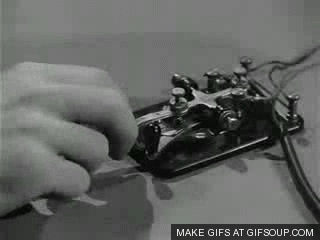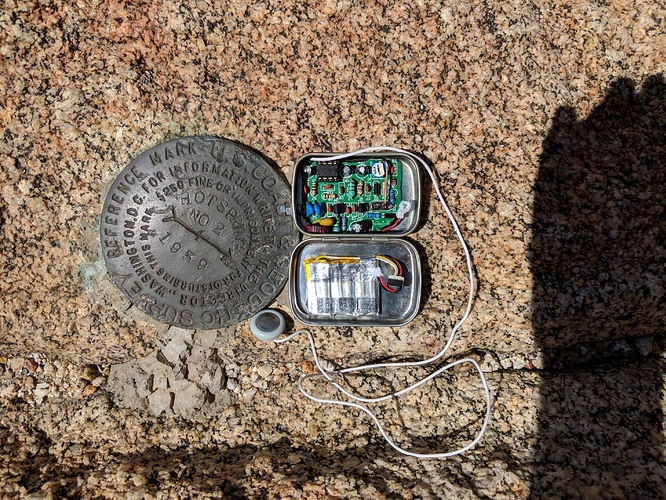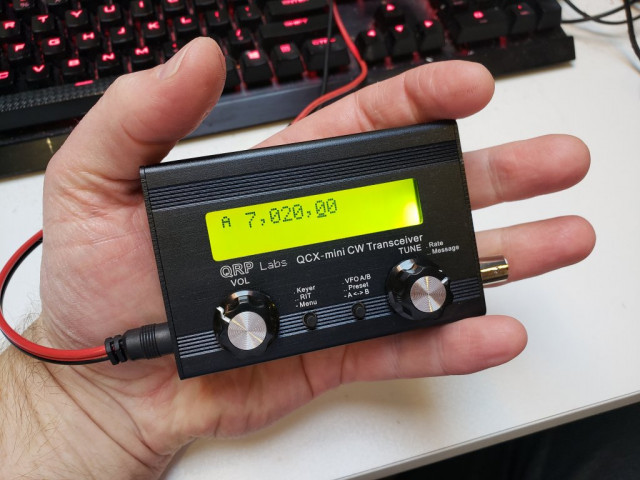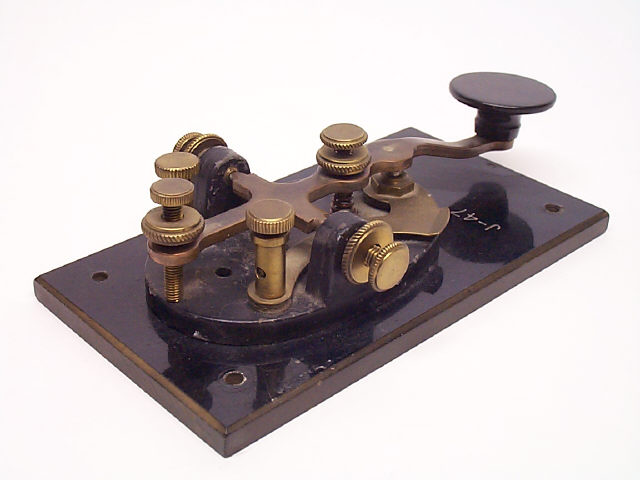
This is somewhat less of an activist-oriented post, because shit would honestly have to be pretty fucking dire in the world for CW (we’ll get into why we call it that in a bit) to actually be practically useful. Not that such situations are impossible, and of course it’s worth thinking about and imagining, but we just don’t find them terribly likely. For a lot of people, Morse Code scratches an itch on a part of our brains that loves learning languages and sending secret codes. Anyhow, Morse code is cool and fun.
Hams call it CW, which stands for Continuous Wave. That’s because rather than modulating in response to the oscillations of a human voice or multiple tones of a digital signal, it uses one continuous tone generated by an oscillator. The oscillator is either On or Off. The circuit is either open or closed. The differences in the amounts of time the radio transmits is what creates the language.
And yes, it is a language. A relatively unique one, too because it’s neither a written language, nor a spoken one. It is sent by the hand, but also it is meant to be heard and experienced in time, not seen as dots and dashes on a piece of paper.
Now, CW is not unique in the sense that many other languages throughout the world have been developed for communicating over long distances using tones and rhythms. See African Talking Drums, and the abeng used by Jamaican Maroons to send coded messages.
Each combination of fist, key, and radio system has a “voice” which is as distinct as a human voice, and can be picked out among a pileup of other voices.
It is not exactly binary, even though it is regarded as the first digital mode. If anything, it’s Ternary. The “dits” and “dahs” are not equivalent to zeros and ones, because the gaps in between the tones are just as important as the tones themselves. For example “dah dit dah dit … dah dah dit dah” is “CQ” which is basically a way of saying “is anyone out there?” But if you change the timing to say “dah dit … dah dit … dah dah … dit dah” it says “NNMA” which probably doesn’t mean anything to anyone.
Computers aren’t very good at decoding CW. CW decoders do exist and are quite common, but they require a certain set of conditions in order to work properly. They expect tones in a certain range, a clear strong signal without any interference, and a very regular cadence. When CW is sent by a real human (especially with a straight key) on the real airwaves, using low power, a computer is of very little help. The human ear is much better at decoding this than a computer.
As far as radio communication goes, CW is the most efficient mode there is, by many standards.
Bandwidth: CW uses the smallest amount of bandwidth. Usually only about 500 Hz. Compare that to the typical 2400 Hz bandwidth of an SSB phone transmission.
Signal to noise: some “low signal” digital signals such as FT8 can be decoded by computer when it’s so deep into the noise that it can’t even be heard by the human ear. However, a skilled CW operator can decode CW that sounds exactly like static. That’s not easy to do with the human voice, and computers are not good at decoding messy CW.
Efficiency: You can probably squeeze more miles per watt out of CW than any other mode. Moreso, the equipment can be extremely small and lightweight.


A word about keys
There are several different types of CW keys, but most people either use a “straight key” or an “iambic paddle”. The straight key is the one most people are visually familiar with.

The straight key produces “dits” and “dahs” by pressing down the key for shorter or longer periods of time.
Back when Morse Code was still a primary mode of long-distance communication, telegraphers – especially postal workers – primarily used straight keys. Prolonged use of straight keys caused a repetitive stress injury known as “glass arm”. To prevent this from happening, keys were made which relied on a side-to-side motion such as semi-automatic keys called “bugs” and then iambic paddles.
Most modern radios have circuitry inside them which allow you to set the sending speed, so the duration of the “dits” and “dahs”. This enables the use of iambic paddles.

Iambic paddles are pretty good. One of the paddles is “dit” and the other is “dah”. You can press them at the same time send “dit dah” or “dah dit” depending upon which paddle was pressed first. Very convenient. They allow you to send well formed characters very easily.
The dis/advantage of straight keys is that they almost force you to send slower. You also have to be very conscious of how long your dits and dahs are. On the air you can often tell when you’re talking to someone using a straight key because they can lean on the “dah” for what seems like an eternity once you get into the groove. The sounds may not be consistent relative to each other. A consistent and legible operator is said to have a “good fist”. The irregularity of the straight key may or may not be desired.
How to learn the Code:
The most important things to do are listening to and sending CW.
There are three main methods of teaching CW which are generally accepted: Koch, Farnsworth, and Instant Character Recognition (ICR). They’re all slightly different and tedious to explain, but we thought we’d point that out as they are terms you might come across.
Many tools exist to help people learn Morse code. Below is a non-exhaustive list of some options that are out there.
Videos:
Morse Code Ninja, Farnsworth Method
Websites:
Learn CW Online and Morse Code World are good learning tools. Morsle.fun is a game kind of like Wordle.
Software:
Morse Mania is an app for Android and iPhone. It’s good at teaching letters using the Koch method, but they want you to pay for numbers and punctuation. Rather than paying for software, you may want to move on to Morse Trainer (Android) which is open source and also uses the Koch method, but in a slightly different way. There are many different mobile applications
Learn from people: The Long Island CW Club and CW Academy are two groups that meet online and teach CW in different ways. Participation in both of these groups pretty much requires that you have both a Key and either a dedicated oscillator or a radio with a practice mode.
Long Island CW Club has regular Zoom meetings where people practice sending back and forth. There is no curriculum. You just show up to whichever meetings are convenient for you. There is a membership fee for LICW.
CW Academy is free, but it’s more structured. Students sign up for an 8 week long course consisting of two one-hour Zoom meetings per week.
How NOT to learn the Code:
Most skilled operators will advise that you NOT try to learn it visually. CW is an audible language, not a written one. Do NOT rely on a sheet of paper with the alphabet as a list of dots and dashes. The reason is basically that when you memorize the symbols in a visual way, you will always try and decode using a visual reference to each corresponding symbol, which is much slower than hearing the sound of each symbol.
Conclusion
So, while CW may not be particularly useful in the day-to-day, consider some of the information above. CW rigs are small and light. They don’t require computers or other equipment. The transmissions are very narrow-banded. CW signals can get out in very poor band conditions, when almost no other signal can. It’s a great emergency mode, and just another great skill to have.
